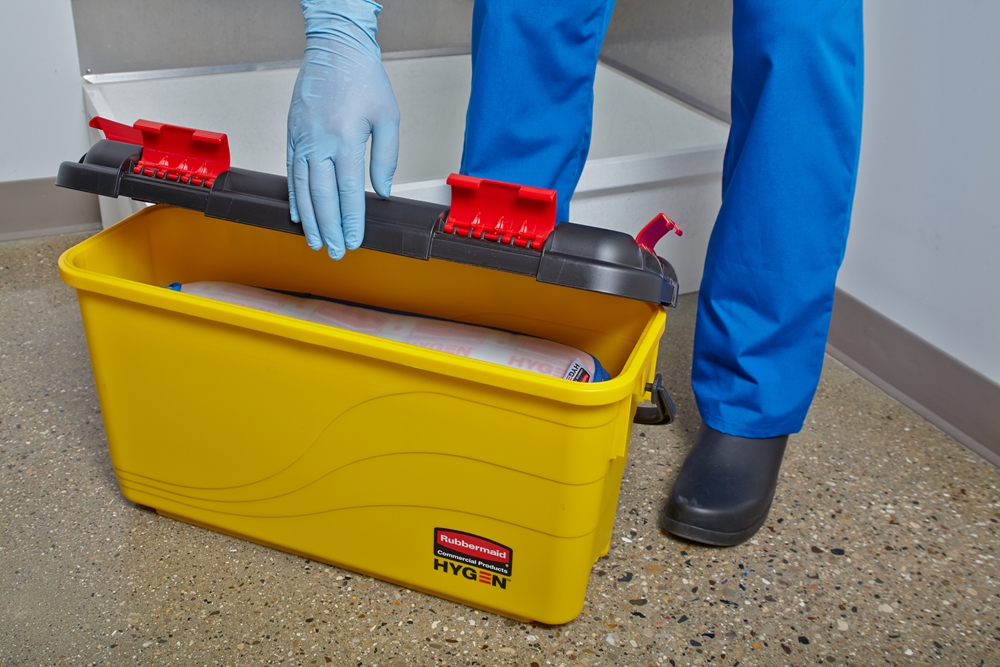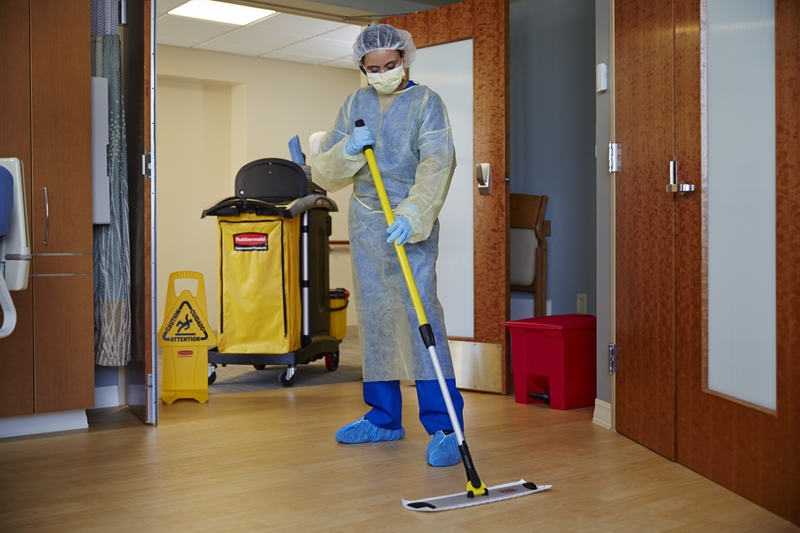
Australian hospital cleaning guidelines are geared for infection control and prevention. Following these guidelines can help protect doctors, staff and patients by ensuring risk is mitigated according to rigorous protocols.
The main concern when it comes to the cleanliness of hospital environments is a secondary infection from multi-resistant organisms (MROs). These are typically bacteria, many of which can not only survive on most surfaces and/or in the air, but are also resistant to many antimicrobials. MROs can cause infection in vulnerable patients and in staff members. Cleaning services for hospitals must be focused on reducing (and, whenever possible, eliminating) the presence of MROs with specialised cleaning solutions.
You can make sure your hospital environment is maintaining cleaning standards by following these evidence-based guidelines from the National Health and Medical Research Council. There are four levels of risk when it comes to evaluating the chances of a hospital-based infection spread. These include:
A very high risk exists when there is an active outbreak of a deadly disease in a high-risk area, or if the infection is more moderately dangerous but highly contagious. Examples include any outbreak in an environment housing vulnerable populations, including children, the elderly, immunocompromised patients or those who have recently undergone transplant surgery. A very high risk protocol typically requires cleaning at least once or possibly twice a day. Disinfecting procedures are rigorous, and geared to combat MROs. Vacuuming must be completed with a high-efficiency particulate air filter, while deep cleaning should be done using a steam cleaner or antimicrobial shampoo. Rubbermaid HYGEN disposable microfibre cloths can be used in occupied and discharged patient rooms as well as isolation and ICU rooms. They are ideal for high-touch areas and other high-risk settings.
A high risk exists in areas that are typically vulnerable to infection. These locations aren't experiencing an active outbreak but house members of vulnerable populations who can become infected more easily than the average patient or member of staff. Examples include intensive care units, high dependency units, burn wards, renal units, operating suites and emergency departments. Protocol for high-risk environments typically requires cleaning once a day or whenever any surface is visibly soiled, and includes many of the same cleaning requirements as those of a very high risk area. Rooms with high public foot traffic (such as ERs) or a need for continual monitoring requiring constant entry and exit by staff can benefit from HYGEN disposable microfibre mops that get rid of most microbes and keep areas cleaner for longer.

A significant risk exists in general wards, where there may be a diverse collective of patients ranging from those who are only slightly ill or injured to the seriously unwell. Significant risk protocols generally entail cleaning once a day for most high-touch surfaces, but areas such as the spaces under stationary beds may be spot-checked daily and thoroughly cleaned once a week. Floors can be kept clean using high quality mopping equipment including washable microfibre mops. These are compatible with a range of cleaning agents, and can be switched to prevent cross contamination - then laundered and reused.
A low risk exists in areas designated for rehabilitation, long-term care, administrative office staff and for domiciliary nursing services.These house patient populations and staff who are traditionally less vulnerable to bacterial infection. Low-risk protocols require daily cleaning of high-touch items, weekly cleaning of low-touch items and spot cleaning or after-discharge cleaning when an item is visibly soiled or when otherwise needed. Spacious, lockable cleaning carts that allow large open floors and less sterile rooms to be cleaned quickly and competently can aid workers in servicing these low-risk areas.
Rubbermaid carries a full line of complementary hospital cleaning solutions designed to eliminate the majority of microbes. When used properly in conjunction with other protective measures, including personal protection equipment (PPE), many risks to patients and staff in a hospital setting can be mitigated. By using the right cleaning protocols and cleaning solutions, dependence on antimicrobials can be reduced. This can help stem the proliferation of antimicrobial-resistant bacteria, which may in turn reduce the need for prescribed antibiotics in patients. Finally, antibiotic-resistant infections may also be cut down, saving patients' lives and reducing the risks of hospitalisation.
Rubbermaid hospital cleaning options provide not only efficient, effective ways to fight against MROs but also deliver functional solutions for cleaning services workers to protect their health and safety. From cleaning carts to flexible mop handles and dusting wands, these products are designed for ease of use and the prevention of injury. Using the proper procedures and the right equipment can help keep Australian hospitals safe for staff and patients alike. For more information on Rubbermaid hospital and healthcare cleaning solutions, contact our team today.